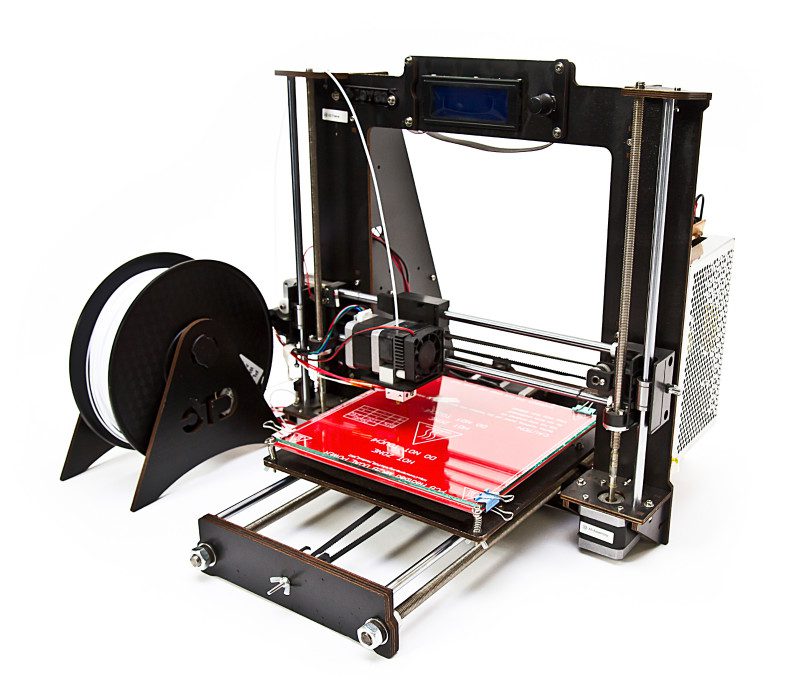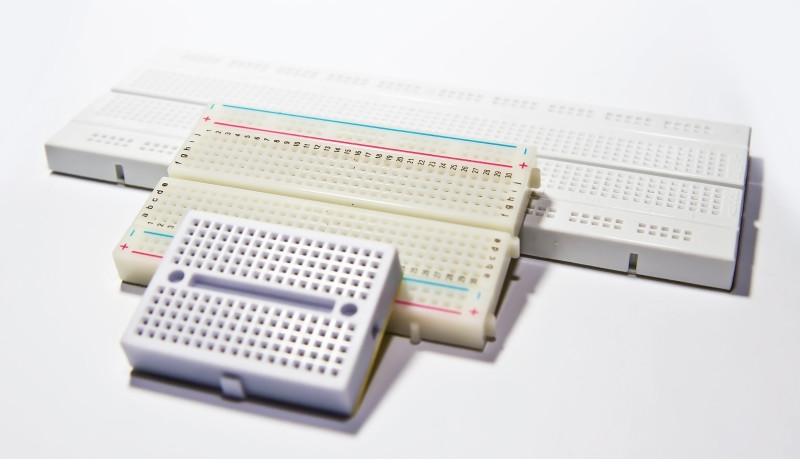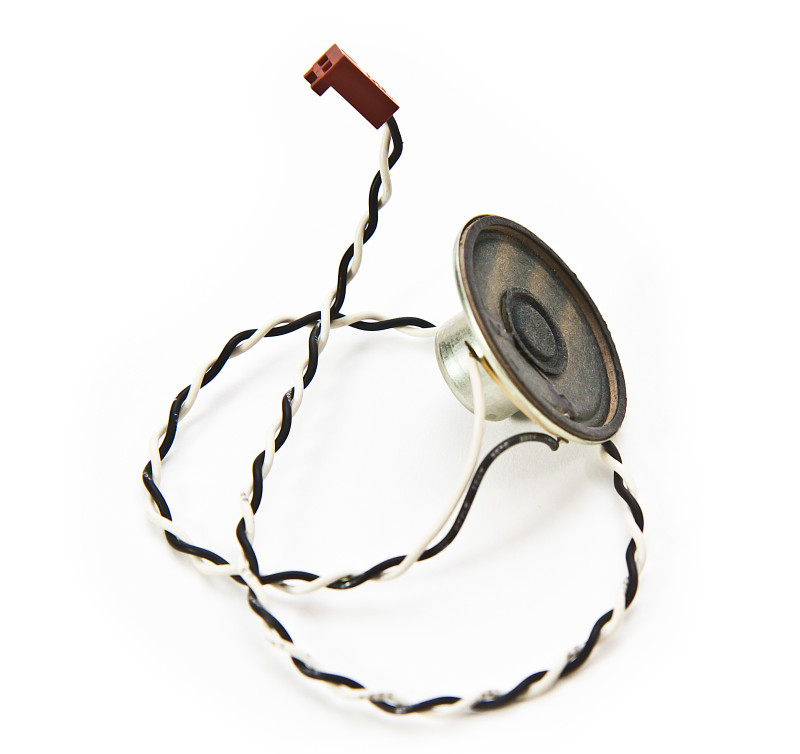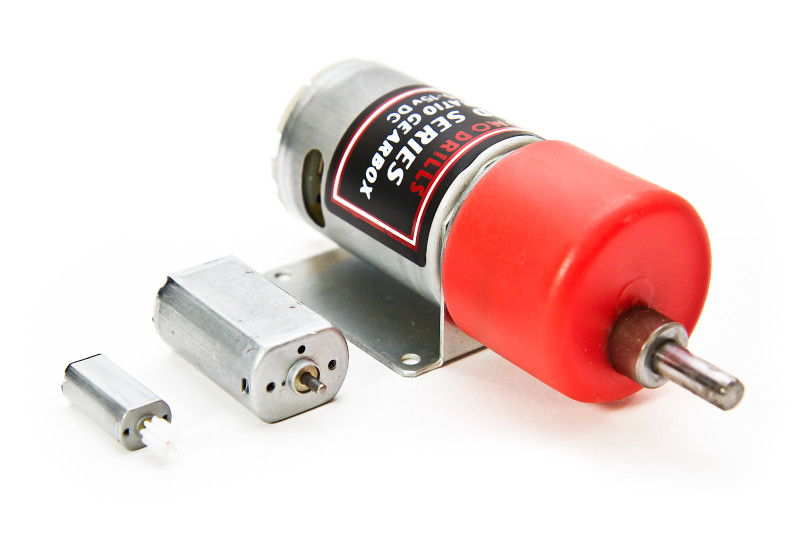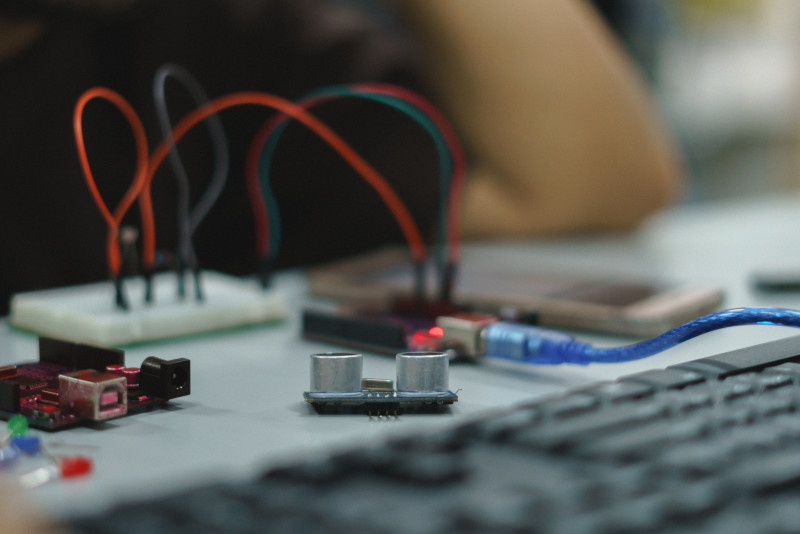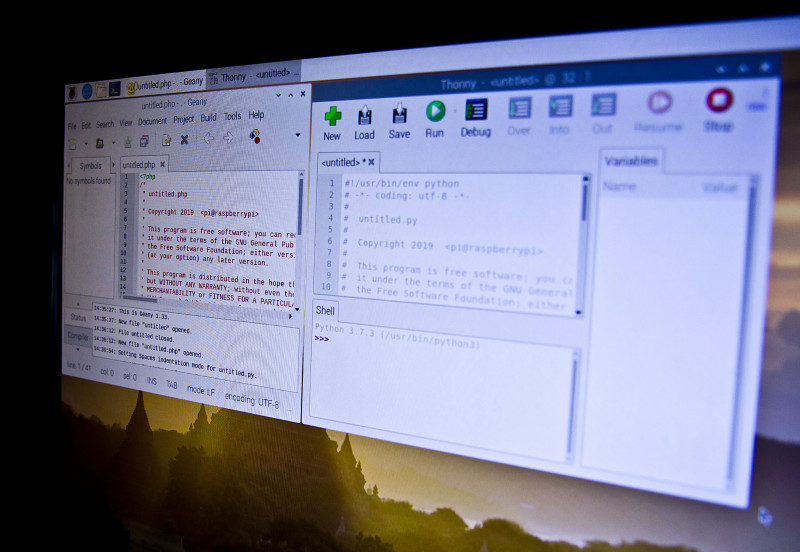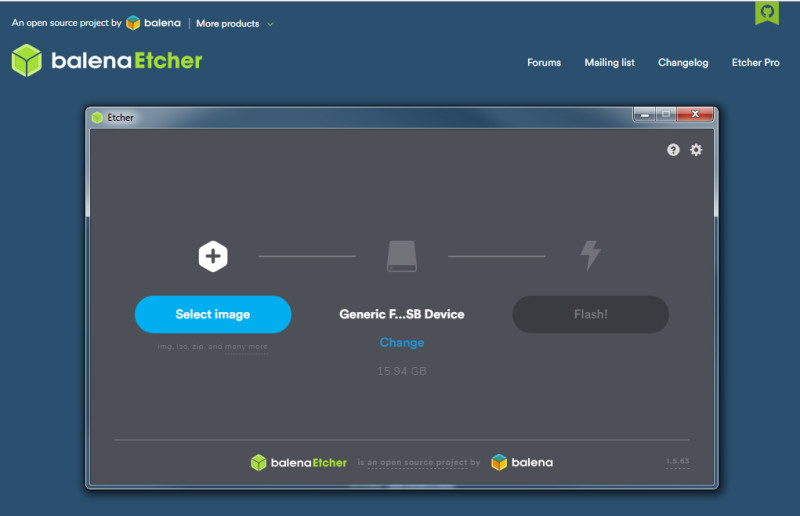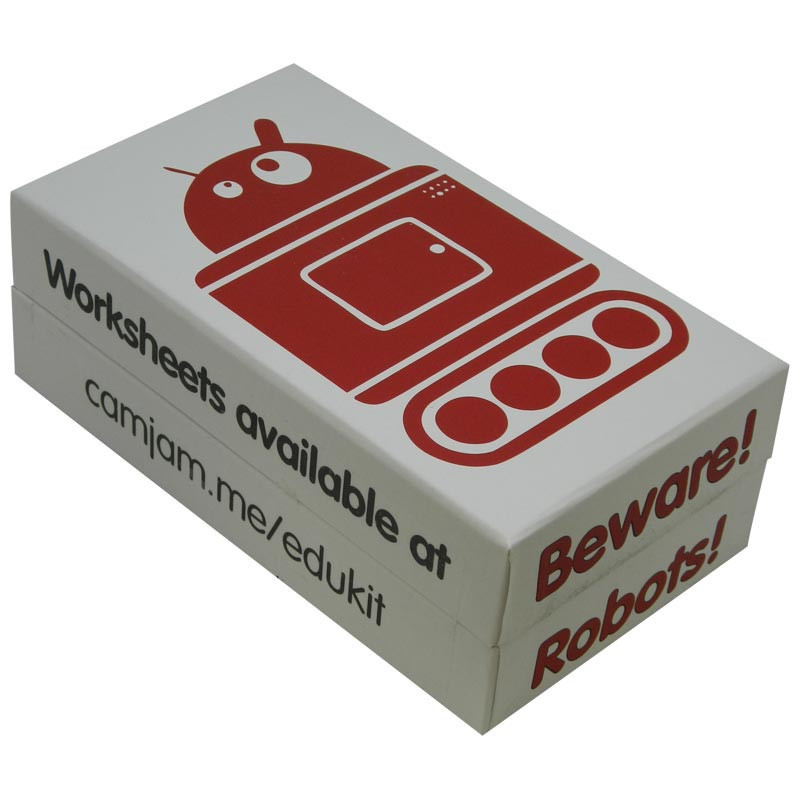Whether you are new to making with Raspberry Pi or have been at it for years, there are always new tools and techniques to be learned. For the new arrival to the making community, this list will be a great resource to introduce you to tools that you may not have heard of before, and a short cut to get to the bits of software that work best for Raspberry Pi projects. If you’ve been doing this for a while, you may want to count how many of these tools are already in your makerspace. If you get to 50, you probably need a bigger makerspace.
Warning
Some of these tools use mains electricity and heated parts. Always follow connection instructions and never leave heated elements unattended.
1. 3D printer
The 3D printer is a fairly recent addition to the maker scene. To be able to print something solid a few years ago was like science fiction, but now it’s a reality. Printers come in many sizes and prices, so you can match your printer to your budget and requirements. There are several choices for filament too, such as PLA (a good beginner’s choice) or ABS and many other more specialised types. If you have the time and patience, you can get a small unassembled one for less than £100, but for better quality (and less frustration) you may want to spend a bit more.
Affordable 3D printing
Download a copy of The MagPi 69 to learn all about affordable 3D printing.
2. Breadboard
Breadboards are solderless circuit boards and allow for fast prototyping of projects. The boards come in several sizes and consist of a matrix of small connector holes into which components and jumper wires can be inserted to make circuits. Click here for our breadboard tutorial.
3. Speaker
Some projects need to make a noise, and the sound quality depends on the type of speaker you use. There are small piezoelectric speakers if all you need are beeps and pops; alternatively, you may need a larger dynamic speaker.
4. LEDs
LEDs (light-emitting diodes) are a bit like very small and efficient light bulbs. They glow when current is passed through them, but they need to be connected correctly. Because they are diodes, the current only flows one way, unlike in conventional light bulbs.
5. Resistors
Resistors are used in electrical circuits to reduce current flow. They are used for many reasons, including changing the brightness of an LED. They can be a fixed value, with stripes to indicate the resistance; or variable, with a slider or dial to change the resistance.
6. Motors
When a current is applied to an electric motor, a spindle in the centre rotates. It spins because of an electromagnetic field that is caused by the flow of current. Motors come in all kinds of sizes, from mini drone motors to industrial ones.
7. Diodes
Diodes are known as semiconductors because they only conduct electricity in one direction. This can be useful for a number of reasons; for example, to protect your Raspberry Pi from being damaged if you are connecting it to motors.
8. Sensors
There are many types of electronic sensors. You may want to detect light or vibration, sound, or heat. There are sensors for all of these and many more. Sensors allow us to capture data about the world around us.
9. Code editor
There are several code editors for Raspberry Pi. IDLE used to be the standard Python editor in Raspbian, but now you might want to give Thonny or Geany a go. If you are feeling adventurous, you could try installing PyCharm.
10. SSH and VNC
If you want to run your Raspberry Pi headless (without monitor, keyboard, and mouse), you will probably want to connect to it by typing in commands using SSH, which provides a terminal, or you can have a windowed version with VNC.
Tools for building & prototyping
11. Clamps
For holding bits of your build together until it’s stuck or you need to change it.
12. Crocodile clips
Connect one component to another without soldering, tape, or breadboard.
13. Crimping tool
Pinches connectors onto wire, fixing it to the connector. Can also can cut/strip wires.
14. Screwdrivers
You’re going to need several different screwdrivers of different sizes/types.
15. Craft knife
Stanley knives are good for most work, but you might also want something lighter.
16. Tweezers
Tweezers can get you out of a fix when that little screw disappears.
17. Hot glue gun
Sometimes there is no substitute, but it’s not suitable for the young ’uns.
18. Hand drill
Most of the time a cordless is best.
19. Saw
Hacksaws for metal/plastic parts, jigsaw/circular for big builds, mitre saws for angles.
20. Pliers
A good set of long-nose/snipe-nose pliers should be on hand at all times.
21. Etcher
Because your Raspberry Pi generally relies on being booted from an operating system on a microSD card, you will require a way to write that data first. The open-source program you need for this is called Etcher from Balena.
22. Gears and wheels
If you are making any sort of moving robot, you’re probably going to need wheels or gears. Some kits come with them, such as the CamJam EduKit 3. You can buy them separately or even 3D-print them.
Tools for storage
23. USB stick
Add extra storage to your Raspberry Pi with a USB thumb drive. You can store more files than the microSD card, and you can transfer files from another computer to your Raspberry Pi.
24. Memory card
Make sure you have multiple microSD cards. An 8GB microSD card can be used to install Raspbian and other operating systems. It’s a good idea to have your regular microSD card and at least one other card for testing out projects.
25. Storage box
When making projects, you quickly rack up additional kit – not to mention cables, components, and Raspberry Pi boards. Keep everything in one place by adding a storage box to your shopping list.


